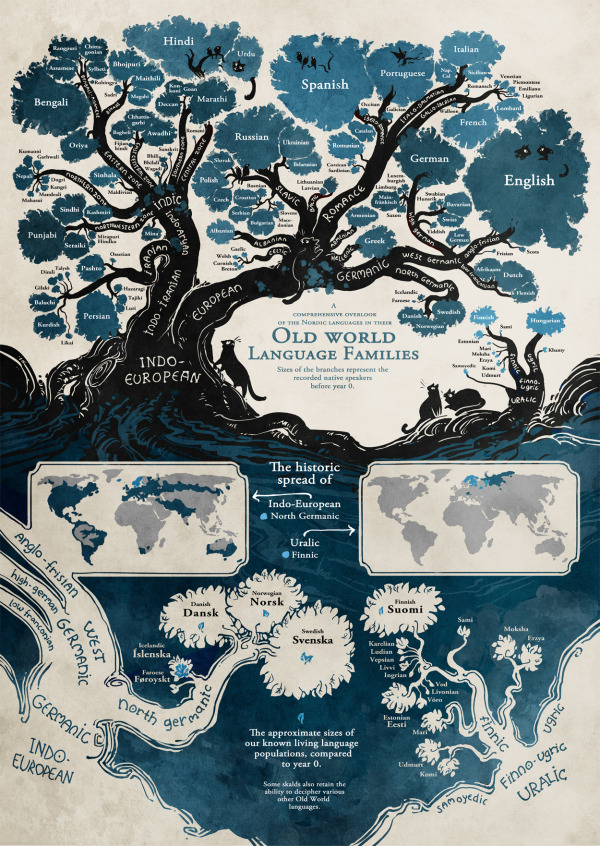Old World Language Families
The Old World Language Families infographic from Stand Still Stay Silent Comic shows the “roots” of our modern languages. Follow each language’s path from bush to roots and discover how closely languages are related to each other.
Language trees for the language lovers! I’ve gathered pretty much all the data for this from ethnologue.com, which is an awesome well of information about language families. And if anyone finds some important language missing let me know! (Naturally most tiny languages didn’t make it on the graph, aww. There’s literally hundreds of them in the Indo-European family alone and I could only fit so many on this page, so most sub-1 mil. speaker languages that don’t have official status somewhere got the cut.)
Fantastic illustration that visualizes the evolution of all the modern languages! It’s a complex design that is intended for readers to dive deep and explore.
Knowing that the image itself will be shared as a stand-alone content piece, the image should include credits and links to the original site.
Found on http://mentalfloss.com









 Randy
Randy


Reader Comments (15)
Luckily I'm one of them :)
thanks for sharing
http://en.wikipedia.org/wiki/Tamil_language
It s a CLASSICAL LANGUAGE.
Only 6 languages is classified as Classical Languages in world. ' TAMIL , CHINESE, LATIN, GREEK, HEBREW & SANSKRIT.
In above classical language Tamil is the old language. Hebrew and Sanskrit is only in literatures. No one speak this languages. TAMIL is speak in 96 countries. It is learn in most part of the world
http://en.wikipedia.org/wiki/Tamil_language
Still missing one of the oldest European language, Basque.
https://en.wikipedia.org/wiki/Basque_language
Whole Central Asia Speaking Turkish! Turkish language is one of the oldest language family in the world.
The oldest sample is The Orhun monuments. (AD 732)The monuments were discovered by a Swedish officer named Strahlenberg, and his finding was made known by publications in 1730. In 1893, the Danish scholar Thomsen was able to decipher these inscriptions and declare that they were written in Turkish. The monuments of Kultigin and Bilge Kagan, situated near the Kosho-Tsaydam lake in the Orhun River valley to the south of the Lake Baykal, and that of Sage Tonyukuk, the Deputy-Khan a little farther, are the three important memorials which make up what is known in general as the Orhun Monuments. The inscription used on them consists 38 characters. Numerous stone monuments are also found around the Yenisei River, but they belong to a period much earlier than that of the Orhun pieces, and there are in excess of 150 Skyturkish character-forms used on. The ancient Turkish script was written vertically with the lines running from top left downwards to the bottom right, and read accordingly, that is from right to left when the text is laid down on its right side.
Why I couldn't see this?